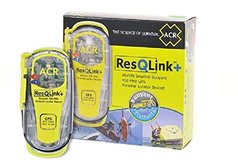Ways to improve your safety on water
Over the past month or so I have been thinking about and adding some emergency/safety protocols to my tournament fishing routine. We all have learned in recent events, what can take place within a second can change our lives forever.
The first thing I started doing right away was asking my Co-Anglers a few simple questions like if they can swim or if they had a PFD and if so if they had checked the indicator window on it recently. The next thing I started doing was not just telling, but showing them where the coast guard kit (throw Cushion, Fire extinguisher, Flare gun, First aid kit, etc.) is located in my boat. I think it’s important for the other person fishing with you to know exactly where everything is should an emergency situation arise.
After the horrible accident at the first FLW event of the season, it made me think long and hard about EPIRBs and why they are such an essential tool. Here in Florida we have some very large lakes and chains of lakes. Some you can’t see across and some have tons of back water areas. It would be very easy for someone to miss you, if you happen to fall overboard or had a medical emergency. This is a no brainer for me to add to my safety plan.
There are many different types of locater beacons available. Here a few smaller compact ones that are very reasonably priced that I have found. I mean we spend thousands of dollars on tackle, electronics, boats, trucks and fuel, what is another $250 that could save our life someday.
Click the Photo for more information on these two units.
There are many other things you can do to make yourself a safer boater. Just but doing the few things above I feel much safer when going out on the water for an enjoyable day of fishing.
As far as safety items to keep on hand. I’ll list the top few below some are required by law some not.
Extra Life Jacket
Fire Extinguisher
Throw Cushion
Whistle
Locator Beacon
Flashlights
First Aid
Sun Block
Extra Bilge W/clips
Flashlights
Jump starter or Jumper cables (Nautic Sport makes a great one. Click the photo)
I hope that after reading this short article it gives you some more insight on how to keep you and you fishing partner safer the next time you’re on the water.


